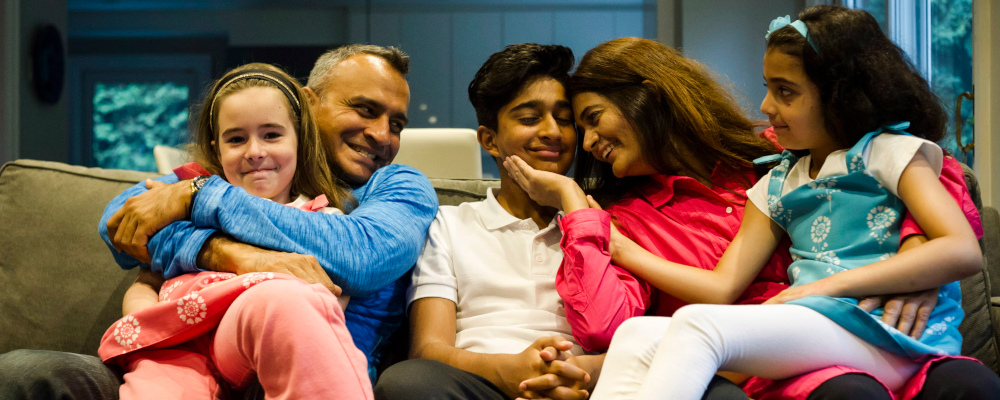Amid Canada’s newly open immigration debate, a key component remains largely unspoken. Sometimes though, the subtext breaks through. Last week the president of a large, publicly funded Ontario college defended his institution’s financial reliance on international students by pointing to Canada’s “baby deficit.” A couple of weeks ago, Statistics Canada reported that Canada’s birth rate had dropped to its lowest point since the government started collecting the data in the 1920s. Despite the earth-shattering, existential nature of this news, media coverage reported the bare facts before quickly moving on, while analysis remained the niche interest of a handful of Canadian think tanks, authors, and cranky columnists.
One of the reasons natalists struggle to capture Canadian time and attention is the difficult, personal nature of the problem. Our low birth rate is a culture issue, which means there’s no easy public policy solution. Another under-discussed factor, though, is that it suffers from a none-of-your-business untouchability.
Perhaps most importantly, since the advent of the birth control pill, when and whether or not to have children has since become just one personal choice in a series of choices—from dating to marriage to career path to family formation—which we have come to think of as exempt from social norms or collective preference. We’ve arrived at a place of social neutrality on important life choices, even though we know they have a measurable impact on the likelihood of people living happy lives.

Despite our squeamishness about discussing marriage and babies at a public policy level, our plummeting birth rate is already having impacts on post-secondary education, health care, and housing affordability. And we don’t need to look far for an early peek at the dark picture our birth rate trend portends.
Of course, Canadians used to be able to take marriage and family formation for granted. Marrying young was the dominant norm and its inherent purpose was a first step toward building a family. This life path was so dominant that as society changed—as people became more secular, women more career-oriented, and child-rearing more complicated and expensive—society chafed at the constraints of the old norms. Freedom began to trump duty, and happiness and meaning were seen to be derived from personal, inward fulfillment. After the sexual revolution, it was perfectly acceptable to choose to get married and have children, but it was understood the state and society ought to be increasingly neutral on the matter.
But as leaders proclaimed that the state had no place in the bedrooms of the nation, many (with perhaps the exception of the one who famously said those exact words) didn’t practice what they preached. In fact, marriage became a luxury good. While marriage rates dropped across the board, they dropped significantly more among low-income Canadians. Today, not only are wealthier Canadians more likely to be married, but they’re also likelier to have more kids.
Worse than the hands-off neutrality of the upper middle class is the increasing disdain for stable, bourgeois family formation by the snobby cultural elite. The creeping dominance of a postmodern worldview in academia, journalism, and even parts of medicine has replaced neutrality around marriage and family formation with active hostility. Treatises deconstructing marriage as oppression, books about miserable women throwing off the yoke of repressive husbands and demanding children, and long-form articles about the joys of non-monogamy and polycules dominate our social landscape. It’s rare to see thought leaders promoting marriage, and those who do are critiqued for platforming privilege.
Despite—or perhaps because of—these loud anti-family voices, there are some positive signs that the rare defenders of marriage and family should feel emboldened. Brad Wilcox, one of the loudest voices for family formation in North America, has a new book, Get Married: Why Americans Must Defy the Elites, Forge Strong Families, and Save Civilization, where he takes up the case for marriage, head-on. And not just any kind of marriage, but the kind of lifelong, stable, family-formation-oriented commitment that romantic comedies with soulmate themes tend to mislead about. The type of marriage for which a prenup would be a moot point.
If Wilcox’s podcast tour is any indication, his book is drumming up more intellectual interest than you might think. And it’s not just in right-wing circles. In an effort to boost birth rates, left-of-centre French President Emmanuel Macron recently rolled out a number of policy initiatives designed to increase family formation, and, in making the announcement, actually articulated a desire on the part of the state to see more babies born in France, breaking the liberal individualism personal choice taboo.

Other mainstream American thinkers are trying to understand why young people are increasingly lonely and mentally ill, inevitably finding that people are spending a lot less time together than they used to. They’re part of a growing consensus that acknowledges that less time spent hanging out, less time spent having sex, and less marriage is clearly intimately (pardon the pun) connected to our dropping birth rate.
Feeling squeamish yet? Well, get over it. To confront the problems caused by low birth rates, we must talk frankly about childbearing, marriage, and even dating. Elite thinkers, public policy experts, and political leaders must get comfortable promoting marriage and increased birth rates as common social goods without worrying whether or not doing so implies they’re the right choices for every person in every instance.
Promoting the power of the success sequence doesn’t detract from the achievements of a happy person raised by a single mom, encouraging healthy dating habits doesn’t have to be discriminatory or even heteronormative, and educating women to understand they can have more children if they start earlier doesn’t condemn them to a life spent barefoot in the kitchen.
Shifting social and cultural trends—first to neutrality, then to outright hostility toward families—is what got us into this mess. People with loud voices and big audiences (Taylor Swift, are you reading this?) committed to shifting them once again are the ones who will get us out of it.
Recommended for You

Christopher Snook: Is Canada sleepwalking into dystopia?

Ginny Roth: How vacant liberal nationalism left Canada worse off than George Grant even imagined

Matthew Grills: Joey Chestnut is America

Michael Kaumeyer: Polite decline: Canada’s aversion to being our best is holding us back




